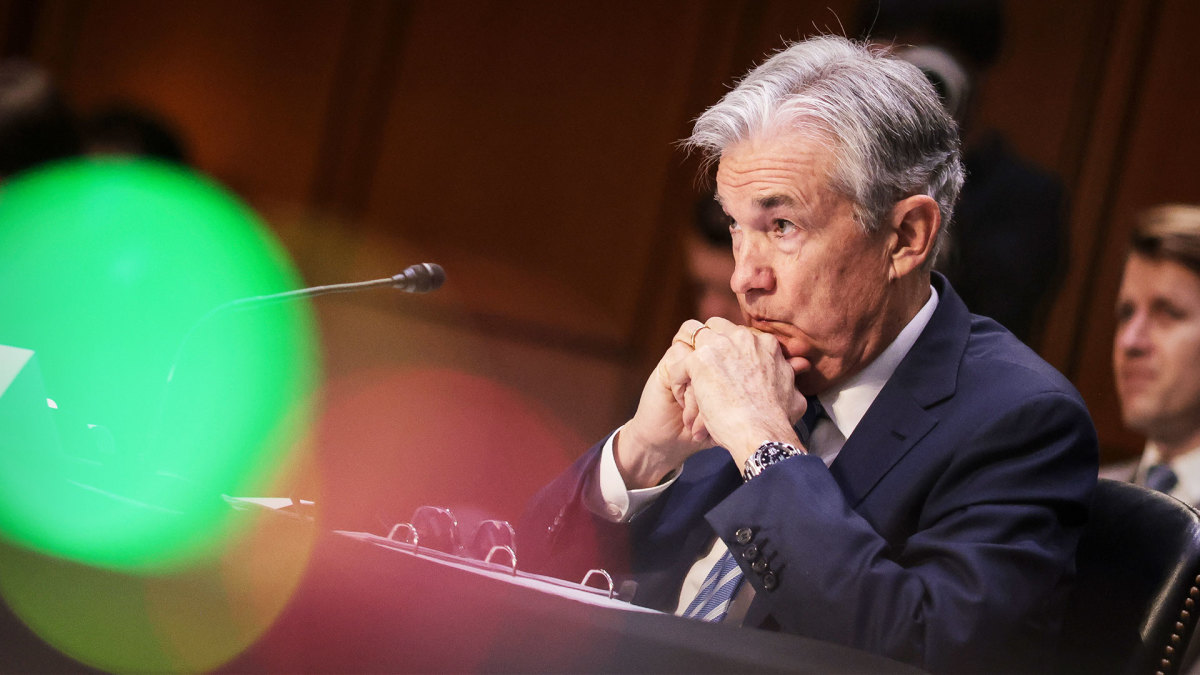
Yes, the odds are the Federal Reserve will be cutting interest rates in 2024, which are great for stocks.
And 2024 is an election year, generally good for stocks, too.
So, does that mean higher stocks in 2024 is baked in? One would like to say "mostly" but there will be some volatility from what will certainly be a bitter election campaign and, possibly, from issues outside the United States.
In the meantime, many of the pieces that should support stocks and the economy now and next year are in place, including:
A Fed bias toward cutting rates. How fast is a different question. Financial markets are leaning toward a rate cut in March, but the Fed doesn't like to move that fast unless economic conditions are dire. And many veteran Fed watchers are leaning toward June for the first cut in the central bank's key federal funds rate. The rate, from which all U.S. rates are built, is now 5.25% to 5.5%.
Interest rates have been falling already. The yield on the 10-year Treasury note topped out at 5% in late October. It finished Friday at 3.914%. Mortgage rates are now under 7% from a high of 8% in early October.
Oil prices have been falling. West Texas Intermediate crude oil briefly hit $95 a barrel on Sept. 28. It's fallen more than 24% to $71.78 as of Dec. 15 and even reached $68.95 on Dec. 12. The AAA national average price of gasoline was $3.075 on Dec. 16, down 21% since September and off 3.8% from a year ago.
The amazing resilient economy. Most Wall Street economists (including at the Fed) were looking for a recession in 2023 and were surprised it didn't happen. Unemployment is still under 4%. (Some are talking about a recession next year.)
Related: What falling interest rates mean for investing in bonds, CDs
The October break in interest rates transformed a traditional fall rally into a broad powerful surge.
The buying propelled the Dow Jones Industrial Average (^DJI) -) to all-time highs above 37,000 and produced new 52-week highs for the Standard & Poor's 500 Index (^IN) -), the Nasdaq Composite Index (^COMPX) -), the Nasdaq-100 Index (^NDX) -) and the small-cap Russell 2000 Index.
Boeing (BA) -) jumped 13% on the week. Drug-store operator Walgreens Boots Alliance (WBA) -) jumped 21%. Also hitting 52-week highs: Costco Wholesale (COST) -), General Electric (GE) -), paint manufacturer Sherwin Williams (SHW) -) and Uber Technologies (UBER) -).
The Ark Innovation exchange-traded fund (ARKK) -) rose 5.5% and is now up 63.6 year-to date.
There are a few things to warn about that could occur over the new month or two.
- This late-fall rally has been so big the U.S. market is looking frothy. You can see it in all the indexes noted above. Their relative strength indexes are all above 70, and a reading above 75 suggests a pullback is near. The Dow's RSI is at 85, a level last seen in January 2018, and a selloff quickly occurred. Relative strength measures the trend of prices and speed of changes. Those who watch these readings know the trend higher is very intense.
- Oil and gasoline prices, falling since September, will not fall indefinitely. Typically, they will move ahead sometime after the first of the year as refiners start to produce gasoline for the summer driving season in the Northern Hemisphere. In addition, the Organization of Petroleum Exporting Countries would like to trim member production to keep crude oil prices high. What's unclear is if all the OPEC-member countries and countries that align with the cartel will abide by the rules.
- There are signs of slowing in the U.S. economy. Layoff news has become more frequent, especially in technology, and so have business failures. The commercial and residential real estate markets have been weak all year. The question is if the real estate issues can damage the banking system, as in 2008, and derail the economy.
- One can never discount geopolitical stresses.
Theoretically, the week ahead should be relatively quiet leading up to the Christmas holiday. Trading will trail off Thursday and Friday, perhaps earlier.
That said, there are some important earnings and economic reports that will be perused carefully.

The big earnings
- FedEx (FDX) -) Tuesday. The package delivery giant has reported strong results all year, and profits are up. Fiscal second-quarter earnings are estimated at $4.14 a share, up from $3.18 a year ago. Shares are up 62% in 2023 and at their highest level since 2021.
- FactSet Research Systems (FDS) -) Tuesday. The consensus earnings estimate for the financial data is earnings of $4.10, up from $3.99 a year ago. Steelcase (SCS) -) also reports Tuesday. Analysts see the office furniture maker reporting 18 cents a share, down from 20 cents last year.
- Micron Technology (MU) -) on Wednesday. The consensus estimate for the chipmaker is a loss of $1.14 a share, down from a loss of 15 cents a year. A beat will cheer investors. Micron's shares are, in fact, up 62% this year.
- Nike (NKE) -) Thursday. The athletic apparel and equipment giant, is seen earning 84 cents in the fiscal second quarter, down a penny from a year ago. The shares are up 27% in the fourth quarter, however, after scuffling along for much of the year. The franchise is powerful, and profits are expected to rise because inventories are leaner and Nike can reduce promotions.
The big economic reports
The government and others will issue widely watched economic reports this week. These include:
Tuesday: Housing starts and building permits from the Census Bureau. It's probably too soon to see if interest rates that were falling ahead of this past week's Fed meeting will affect the reports. Economists are looking for slight declines in a depressed industry As of October, starts were off 11.3% from a year ago. Permits were up slightly for single-family houses and multi-family units. Building permits offer a look at what's ahead for builders, buyers and sellers.
Wednesday: Mortgage refinancings and applications from the Mortgage Bankers Association. If there an uptick in housing, you should start to see it here.
Friday: Personal Consumption Expenditures Index from the Commerce Department. This report is widely studied at the Fed because it tracks consumer spending patterns more clearly than, say, the Consumer Price Index. A low PCE inflation reading will reinforce the Fed's decision to stop raising interest rates.







